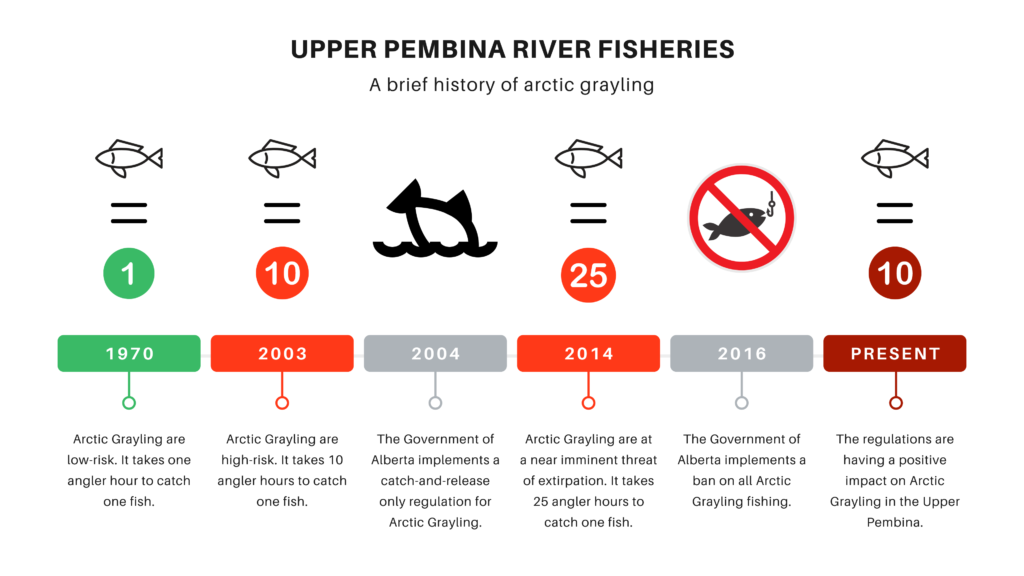Upper Pembina River Fisheries Update
Friday Read, Science, and Watershed Issues | arctic grayling, conservation, and fisheries | November 2021
Ashley Johnson, Education Coordinator
On October 28th, Alberta Environment and Parks hosted a webinar on the state of the fisheries of the Upper Pembina River.
Mike Blackburn walked those of us in attendance through a timeline of the Upper Pembina, which is an area that includes the headwaters of the Pembina River to Lodgepole, and all the tributaries along the way.
Before going through the timeline, it’s important to know that there is a risk assessment scale for fisheries, from very high risk to no risk.

One way of conceptualizing that scale is through angler hours. An angler hour is the time it takes to catch a fish (not including time to set up the rod).
In the 1970s, there was an abundance of fish in the river. One arctic grayling took one angler hour to catch. By 2003, it took 10 angler hours to catch one arctic grayling.
In 2004, the Government of Alberta changed the fishing regulations for arctic grayling to catch and release only, in the hopes that it would help the arctic grayling populations in the Upper Pembina.
Ten years later, in 2014, it took 25 angler hours to catch one single arctic grayling. Clearly something would have to be done, and in 2016 the Government of Alberta banned all fishing of arctic grayling.
It’s been 5 years since that fishing ban, so have the regulations made a difference for arctic grayling?

There are four indicators of recovery for fish populations: larger fish; more fish; fish in more places (expanded range); more baby fish.
Across all recovery metrics, arctic grayling populations are trending upwards. In other words, the recovery program is working! While they are still at a very high risk, the recovery program is helping the arctic grayling population.
The goal of the program is to get arctic grayling populations to a moderate risk status. This would allow the population to be more resilient. 2021 was an extreme year, and resilient fish populations will be better equipped to handle any such extreme years in the future.
To learn more about the program and how it affects other fish species, check out this link.
